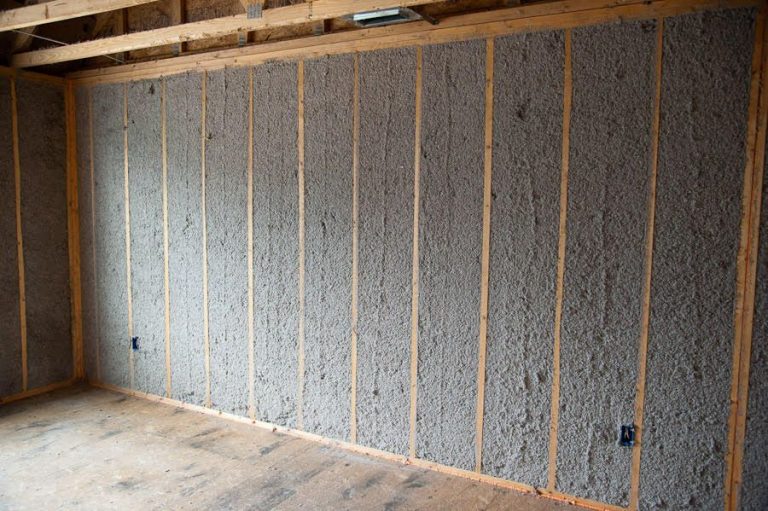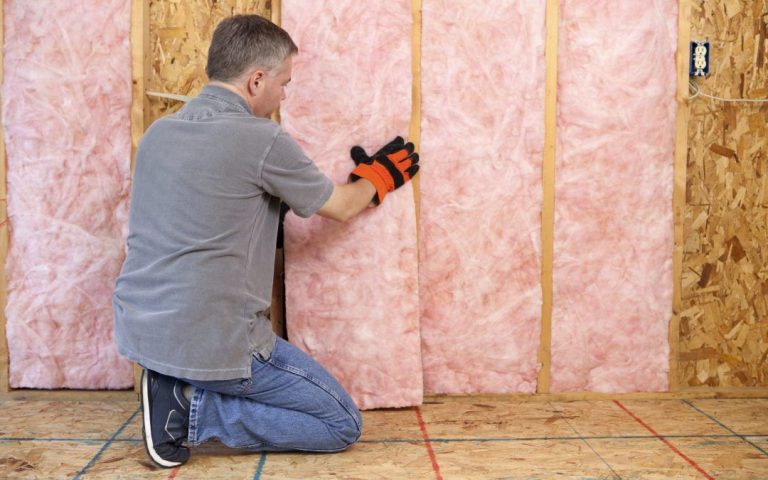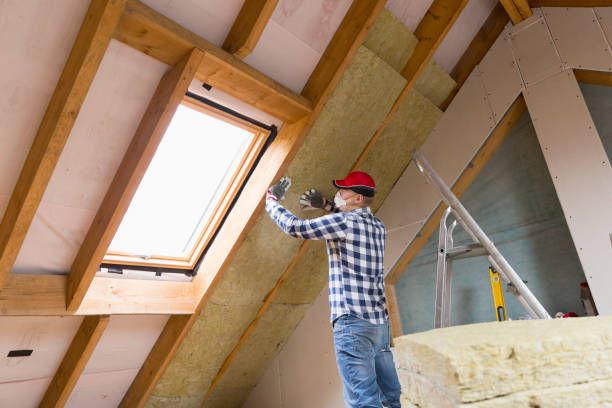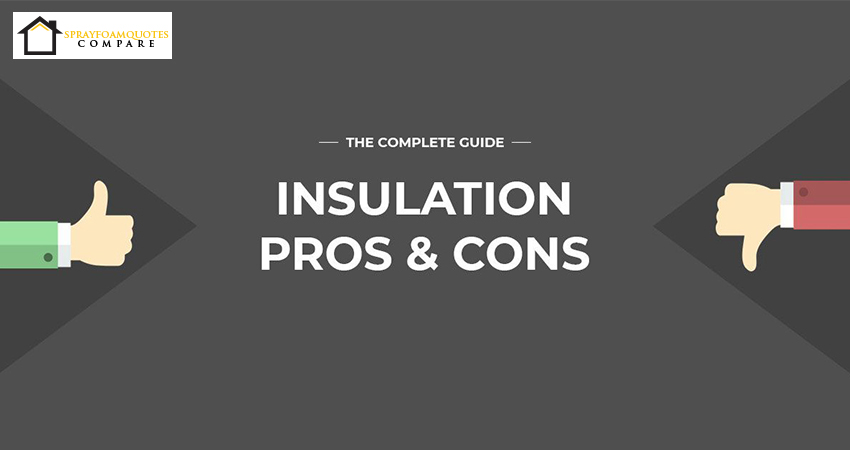Your insulation is about so much more than keeping your home warm and cosy. Your home insulation is also integral in keeping the heating that you’re paying for in your home where it belongs and stops your hard earned money from literally drifting away through your roof. Even if you have state of the art, thermally broken windows in your home, you still can’t hope to achieve optimal heat and energy efficiency for your home without the right insulation. There are a great many types of insulation on the market each with their own inherent insulation pros and cons.
However, finding the right kind of insulation for your home isn’t as cut and dried as you may think. Here we’ll take a close look at the many different types of insulation pros and cons so that you can make an informed decision about which is best suited to the unique needs of your home…
Icynene Spray Foam Insulation Pros and Cons
One of the most frustrating things about trying to keep your home well insulated is the way in which even the slightest gap, hole or crack can allow cold breezes while also allowing warm air to seep out of the home. The beauty of spray foam insulation is the way in which it creates a complete seal in your attic, walls, under your floor or even in your barn, storage area or warehouse.
Because spray foam insulation is so malleable and adaptable it can work wonders in virtually any setting. It not only minimizes the risk of cold air infiltration it also limits moisture entrapment leading to less condensation which in turn means less chance of rotting timber window frames, mildew or patches of damp.
How it works
Icynene spray foam insulation does exactly what it says on the tin. The spray is a water-blown liquid called Icynene which hardens and expands to up to 100 times its initial size, creating an impermeable seal.
This makes it not only perfect for covering large areas like your attic, but it can also be used to fill in troublesome cracks and gaps or the interstices between your walls and window frames.
While spray foam insulation is in many ways a perfect way to insulate your home it’s worth noting that this is not a DIY job. You will need to get your spray foam applied by a licensed contractor.
Please note: There are 2 different kinds of spray foam available; breathable (open cell) and non-breathable (closed cell). The open cell foam should be used on all residential builds as it allows timbers in your home to breathe and therefore prevents rot. On the other hand, closed cell foam should always be used on commercial buildings without timber, as it will not absorb moisture.
So, that’s how it works, let’s take a closer look at Icynene spray foam insulation pros and cons;
Pros
- Eco-friendly – Because it is water blown it uses no harmful blowing agents and is also free of harmful chemicals making it both non-toxic and eco-friendly.
- Energy saving – Another way in which spray foam insulation is eco-friendly is the way on which it cuts down your energy consumption. Since air leakage accounts for around 50% of a home’s energy loss, installing spray foam insulation can lead to a great deal of savings. In fact, it’s estimated that spray foam insulation could save the average family around £225 a year on their energy bills. Given that it lasts around 20 years that adds up to £4,500 a year in savings throughout its lifespan!
- High insulation value – Spray foam insulation has a high insulation value (typically around 0.39).
- Quick and easy to install – A contractor can install your spray foam insulation with speed and proficiency.
- Noise proof – Spray foam insulation can even provide effective sound proofing, minimising distracting airborne sounds.
Cons
- Not a DIY job – Unfortunately, even veteran DIY-ers will be unable to install their own spray foam insulation. It’s a job that needs to be done by a licensed contractor.
- High initial outlay – Compared to other insulation types it represents significant upfront costs, although these more than pay for themselves in the long term.
Cellulose Insulation Pros and Cons
Finally, Cellulose insulation is a light and fluffy coating of loose fibres which can be applied to your attic space. Because these fibres are applied loosely they can offer greater coverage than pre-cut batts or rolls of material, although they are less impermeable than spray foam.
Let’s take a closer look at the Cellulose insulation pros and cons.

How it works
While Cellulose often comes as loose fibres it is also available in the form of batts and blankets. In all cases, this makes it relatively easy to install.
While it can be installed as a DIY project, you will find that you get the best savings when you hire a professional contractor for the installation.
Pros
- Super eco-friendly -Because it is made from old newspapers Cellulose is an inherently eco-friendly form of insulation.
- Cost-effective -The fact that it’s made from recycled and repurposed materials means that it’s also extremely cost effective.
- Fireproof -Cellulose fibres have a boric acid coating which makes them fire retardant. However, be advised that this coating can wear off over time.
Cons
- Moisture absorbent – Cellulose can absorb ambient moisture making it prone to rot and mould.
- Sagging – Over time, cellulose can sag, thereby decreasing its U-value.
- Dust – Cellulose can give off a lot of dust making it essential to wear a protective mask when installing.
Fiberglass Insulation Pros and Cons
It’s affordable, it’s ubiquitous, it’s easy to install. It’s understandable why Fiberglass is perhaps the most popular form of insulation in homes all over the country (and indeed the world).
But does Fiberglass insulation live up to its reputation as the go-to insulation material for British homes? Let’s take a look…

How it works
Fiberglass insulation comes in a range of forms. Most often it comes in rolls which are rolled out to cover the intended surface (usually the space in your attic flooring between roof joists). Or it can also be purchased in pre-cut batts which can simply be placed wherever you need them.
This allows for quick and easy installation which can be accomplished even by those with very little DIY experience. Let’s take a closer look at the fiberglass insulation pros and cons…
Pros
- Easy to find – You’ll find fiberglass insulation in virtually any DIY shop.
- Easy to install – It’s easy and intuitive to install, especially when applied in pre-cut batts. Because fiberglass does not shrink over time you can be sure that it’ll keep its shape.
- Affordable – Easily one of the most affordable forms of insulation.
Cons
- Toxic – Fiberglass insulation often contains the toxic chemical formaldehyde.
- The itch factor – Fiberglass has one of the worst “itch factors” of any kind of insulation, making protective clothing and eyewear essential.
- Sags and dips – While Fiberglass maintains its shape over time it is nonetheless prone to sagging and dipping which can reduce its U-value.
Rockwool Insulation Pros and Cons
Rockwool (or mineral wool) has long been used as an alternative to sheep’s wool or plant fibres like cotton in wall insulation. While its popularity has dwindled in recent decades, it’s making a big comeback right now.
Why? Because while it may not be as ubiquitous as the more popular fiberglass it does have some inherent advantages. Its dense nature makes it easy to mark, cut and shape with a consistency very much like bread. Because of this, you can carve it accurately around obstacles like timber rafters, pipes, electrical transformers and fittings such as electrical outlets.

How it works
Rockwool is made by melting down basalt stone and recycled slag from steel mills, then spinning it into fibres which can, in turn, be formed into batts, blankets, boards or rolls. Your Rockwool insulation can then be cut to size and shaped to allow it to occupy whatever space you wish.
Let’s take a look at the Rockwool insulation pros and cons.
Pros
- Easy to install – Because it is so easy to cut and shape, Rockwool installation is easy for even DIY novices to install.
- Vapour barrier – Rock wool is completely water resistant and also provides a strong vapour barrier.
- Fire resistant – Rock wool resists extreme heat better than many of its counterparts.
Cons
- You’ll likely need a lot – To get the desired effect you’ll typically need between 10-12 inches of insulation.
- It gets itchy – As with Fiberglass, handling can result in itching and a rash in some. While some report that the “itch factor” is worse with rock wool than with Fiberglass, others consider them about the same in this regard. Be sure to wear protective gear when installing.
In conclusion
When it comes to insulating your home there are different insulation types to choose from, and each of the most popular forms of insulation has its own unique advantages. That said, spray foam insulation really is the gold standard.
That’s why we work so tirelessly to ensure that homes all over the country are able to find affordable quotes!
Let us know which type of insulation you prefer in the comments below.


